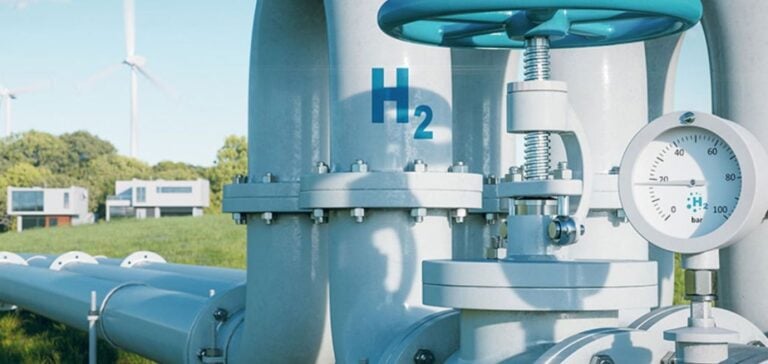H2 Energy Europe, developer of hydrogen ecosystems, and Ontras Gastransport GmbH, pipeline operator in Germany, have signed an agreement to study the transport of green hydrogen between Denmark and Germany.
The project concerns the future 1 GW hydrogen power plant in Esbjerg, Denmark, with the aim of serving the German industrial zones of Salzgitter, Berlin, Eisenhüttenstadt, Magdeburg and Leipzig-Halle.
The aim of the agreement is to use existing and planned infrastructures, including Germany’s central hydrogen network and the Green Octopus Central Germany (GO!) pipeline, to transport hydrogen produced in Esbjerg.
The development of these infrastructures is part of Germany’s strategy to secure its energy supply by drawing on diversified sources, both domestic and international.
Needs assessment and transport capacity
H2 Energy and Ontras Gastransport plan first to define the technical and commercial requirements for hydrogen transport, before concluding a possible long-term capacity contract.
The aim is to ensure that the volumes of hydrogen produced at Esbjerg can be efficiently integrated into the German gas grid, in line with industrial needs.
This project is crucial to meeting Germany’s growing demand for hydrogen, estimated at between 95 and 130 TWh per year by 2030.
The planned production capacity at Esbjerg is around 90,000 tonnes of green hydrogen per year.
This production capacity is significant in a context where Germany expects to import between 50% and 70% of its hydrogen needs.
The integration of the Danish hydrogen plant into the Ontras gas transmission network would enable us to meet part of this growing demand.
Strategies and infrastructure in Europe
Germany is investing heavily in the development of its hydrogen infrastructure to facilitate access to clean energy and reduce its dependence on fossil fuels.
Utilizing Ontras’ existing infrastructure, combined with new constructions such as the Green Octopus Central Germany pipeline, would optimize hydrogen transport logistics across the country’s key industrial regions.
The Esbjerg-GO! project is an example of how Europe plans to integrate its energy networks to guarantee security of supply and optimize costs.
For market players, this collaboration could also serve as a model for other cross-border initiatives, aligned with European energy policies.
This type of partnership shows how the traditional gas industry can evolve to support the transition to cleaner forms of energy.
The synergies between H2 Energy and Ontras could encourage other similar cooperations, supporting the integration of a hydrogen market in Europe.






















